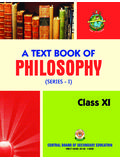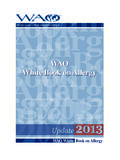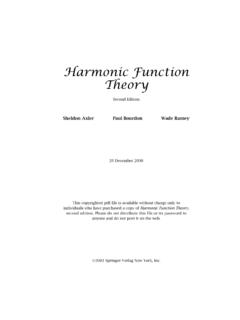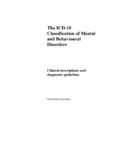Transcription of THE OERA LINDA BOOK - Campbell M Gold.com
1 THE OERA LINDA book FROM A Manuscript of the Thirteenth Century WITH THE PERMISSION OF THE PROPRIETOR C. OVER DE LINDEN, OF THE HELDER The Original Frisian Text AS VERIFIED BY DR J. O. OTTEMA ACCOMPANIED BY AN ENGLISH VERSION OF DR OTTEMA'S DUTCH TRANSLATION BY WILLIAM R. SANDBACH LONDON TR BNER & CO., LUDGATE HILL [1876] [A PURPORTED CHRONICLE OF THE DESCENDANTS OF THE LOST ATLANTIS--OF THE NORTH SEA] (This material was compiled from various sources in the United States public domain) --()-- p. v TRANSLATOR'S PREFACE. THE work of which I here offer an English translation has excited, among the Dutch and German literary societies, a keen controversy in regard to its authenticity a controversy not yet brought to a conclusion, some affirming that it contains internal evidence of truth, while others declare it to be a forgery.
2 But even the latter do not insist on its being the work of a modern fabricator. They allow it to be one hundred, or perhaps one hundred and fifty, years old. If they admit that, I do not see why they refuse it a greater antiquity; and as to the improbability of the stories related in it, I refer the reader to the exhaustive inquiry in Dr Ottema's Preface. Is it more difficult to believe that the early Frisians, being hardy and intrepid marine adventurers, sailed to the Mediterranean, and even proceeded farther, than that the Ph nicians sailed to England for tin, and to the Baltic for amber? or that a clever woman p. vi became a lawgiver at Athens, than that a goddess sprang, full grown and armed, from the cleft skull of Jupiter?
3 There is nothing in the narratives of this book inconsistent with probability, however they may vary from some of our preconceived ideas.; but whether it is really what it pretends to be a very ancient manuscript, or a more modern fiction it is not the less a most curious and interesting work, and as such I offer it to the British public. In order to give an idea of the manuscript, I have procured photographs of two of its pages, which are bound with this volume. I have also followed Dr Ottema's plan of printing the original Frisian opposite to the translation, so that any reader possessing a knowledge of the language may verify the correctness of the translation. In addition to the Preface which I have translated, Dr Ottema has written two pamphlets on the subject of the Oera LINDA book (1.)
4 Historical Notes and Explanations; 2. The Royal Academy and Het Oera LINDA Bok), both of which would be very valuable to any one who wished to study the controversy respecting the authenticity of the work, but which I have not thought it necessary to translate for the present publication. p. vii There has also appeared in the "Deventer Courant" a series of twelve letters on the same subject. Though written anonymously, I believe they are from the pen of Professor Vitringa. They have been translated into German by Mr Otto. The writer evidently entered upon his task of criticism with a feeling of disbelief in the authenticity of the book ; but in his last letter he admits that, after a minute examination, he is unable to pronounce a positive conviction either for or against it.
5 His concluding remarks are to the following effect "If the book is a romance, then I must admit that it has been written with a good object, and by a clever man, because the sentiments expressed in it are of a highly moral tendency; and the facts related, so far as they can be controlled by regular history, are not untruthful; and where they deal with events of which we have no historical records, they do not offend our ideas of possibility or even probability." WM. R. SANDBACH. p. v INTRODUCTION. C. OVER DE LINDEN, Chief Superintendent of the Royal Dockyard at the Helder, possesses a very ancient manuscript, which has been inherited and preserved in his family from time immemorial, without any one knowing whence it came or what it contained, owing to both the language and the writing being unknown.
6 All that was known was that a tradition contained in it had from generation to generation been recommended to careful preservation. It appeared that the tradition rests upon the contents of two letters, with which the manuscript begins, from Hiddo oera LINDA , anno 1256, and from Liko oera LINDA , anno 803. It came to C. over de Linden by the directions of his grandfather, Den Heer Andries over de Linden, who lived at Enkhuizen, and died there on the 15th of April 1820, aged sixty-one. As the grandson was at that time barely ten years old, the manuscript was taken care of for him by his aunt, Aafje Meylhoff, born Over de Linden, living at Enkhuizen, who in August 1848 delivered it to the present possessor.
7 Dr E. Verwijs having heard of this, requested permission to examine the manuscript, and immediately recognised it as very ancient Fries. He obtained at the same time permission to make a copy of it for the benefit of the Friesland Society, and was of opinion that it might be of great importance, provided it was not supposititious, and invented for some deceptive object, which he feared. The manuscript p. vi being placed in my hands, I also felt very doubtful, though I could not understand what object any one could have in inventing a false composition only to keep it a secret. This doubt remained until I had examined carefully-executed facsimiles of two fragments, and afterwards of the whole manuscript the first sight of which convinced me of the great age of the document.
8 Immediately occurred to me C sar's remark upon the writing of the Gauls and the Helvetians in his "Bello Gallico" (i. 29, and vi. 14), "Gr cis utuntur literis," though it appears in v. 48 that they were not entirely Greek letters. C sar thus points out only a resemblance and a very true one as the writing, which does not altogether correspond with any known form of letters, resembles the most, on a cursory view, the Greek writing, such as is found on monuments and the oldest manuscripts, and belongs to the form which is called lapidary. Besides, I formed the opinion afterwards that the writer of the latter part of the book had been a contemporary of C sar. The form and the origin of the writing is so minutely and fully described in the first part of the book , as it could not be in any other language.
9 It is very complete, and consists of thirty-four letters, among which are three separate forms of a and u, and two of e, i, y, and o, besides four pairs of double consonants ng, th, hs, and gs. The ng, which as a nasal sound has no particular mark in any other Western language, is an indivisible conjunction; the th is soft, as in English, and is sometimes replaced by d; the gs is seldom met with I believe only in the word segse, to say, in modern Fries sidse, pronounced sisze. The paper, of large quarto size, is made of cotton, not very thick, without water-mark or maker's mark, made upon a frame or wire-web, with not very broad perpendicular lines. An introductory letter gives the year 1256 as that p.
10 Vii in which this manuscript was written by Hiddo overa LINDA on foreign paper. Consequently it must have come from Spain, where the Arabs brought into the market paper manufactured from cotton. On this subject, W. Wattenbach writes in his "Das Schriftwesen im Mittelalter" (Leipzig, 1871), s. 93: "The manufacture of paper from cotton must have been in use among the Chinese from very remote times, and must have become known to the Arabs by the conquest of Samarcand about the year 704. In Damascus this manufacture was an important branch of industry, for which reason it was called Charta Damascena. By the Arabians this art was brought to the Greeks. It is asserted that Greek manuscripts of the tenth century written upon cotton paper exist, and that in the thirteenth century it was much more used than parchment.










